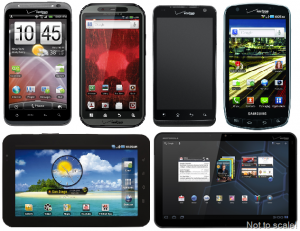Marketed as the next generation of wireless communication, 4G LTE provides laptops, tablet PCs, smartphones and USB wireless modems mobile ultra-broadband Internet access. Basically, this technology was developed to increase the capacity and speed of wireless data networks via a new DSP or digital signal processing.
A lot of people want it, but not as many know what it means.
- To date, there are over 57 commercial networks offering 4G LTE worldwide and a 63 percent growth in that market was achieved in just three years.
- According to a study, there are 49 percent of consumers who don’t understand the concept of 4G.
- Surprisingly, the same data showed that 71 percent of these consumers will be purchasing a 4G smartphone in the next 12 months.
But is 4G LTE really the future of mobile communication, or is it an old technology wrapped in fancy paper and a red ribbon? Let’s find out:
Since our society is already “internet-dependent,” the need for a faster and more reliable access to mobile broadband Internet is growing. In North America and Canada, there are roughly 5.3 million LTE subscribers while in Europe, there 387,000 LTE subscribers as of 2012. Since 4G LTE promises 150 Mbps download rate and a 50 Mbps upload rate, subscribers can now experience reduced latency and lag time when connected.
In the United States, Verizon Wireless is upgrading their network facilities to improve their 4G LTE services as it plans to grow its 287 million subscribers in the next few years. While in Europe, the birthplace of the first publicly-available LTE service, network providers like O2, have realized that they have to keep up with the times. By 2015, O2 aims to have 98 percent coverage both indoor and outdoor in the UK.
Born out of a partnership
Six organizations from different parts of the world formed the 3GPP or the 3rd Generation Partnership Project.
Their initial goal was to create a global-applicable 3G (third generation) mobile phone system using existing technologies. The GSM (Global System for Mobile Communication) and HSPA (High Speed Packet Access) allowed for the development of future communication technologies, which led to the conceptualization of LTE. In 2009, TeliaSonera launched the very first publicly available LTE service in Stockholm, Sweden via a USB modem. Two years after its launch, network providers have reported that they earned over $2.1B USD on global infrastructure alone.
LTE and the future of communications
Recently, T-mobile launched their 4G network in Baltimore and other brands such as AT&T are continuously expanding their coverage in the area. With technology evolving almost every day, consumers can be caught in the middle of things. The technology and reliability of LTE are still up for debate. But some experts believe that the new mobile connection is the best choice over the other technologies.
So, analysts are already predicting the decline of 3G.
We have seen huge improvements in speed and latency, reduced cost per bit through improved spectral efficiency, support for real-time applications and smoother real-time videos. But as our society moves forward, so does technology.
Before you go...
Please consider supporting Technical.ly to keep our independent journalism strong. Unlike most business-focused media outlets, we don’t have a paywall. Instead, we count on your personal and organizational support.
Join our growing Slack community
Join 5,000 tech professionals and entrepreneurs in our community Slack today!

The person charged in the UnitedHealthcare CEO shooting had a ton of tech connections

Delaware students take a field trip to China using their tablets and ChatGPT

Northern Virginia defense contractor acquires aerospace startup in $4B deal


